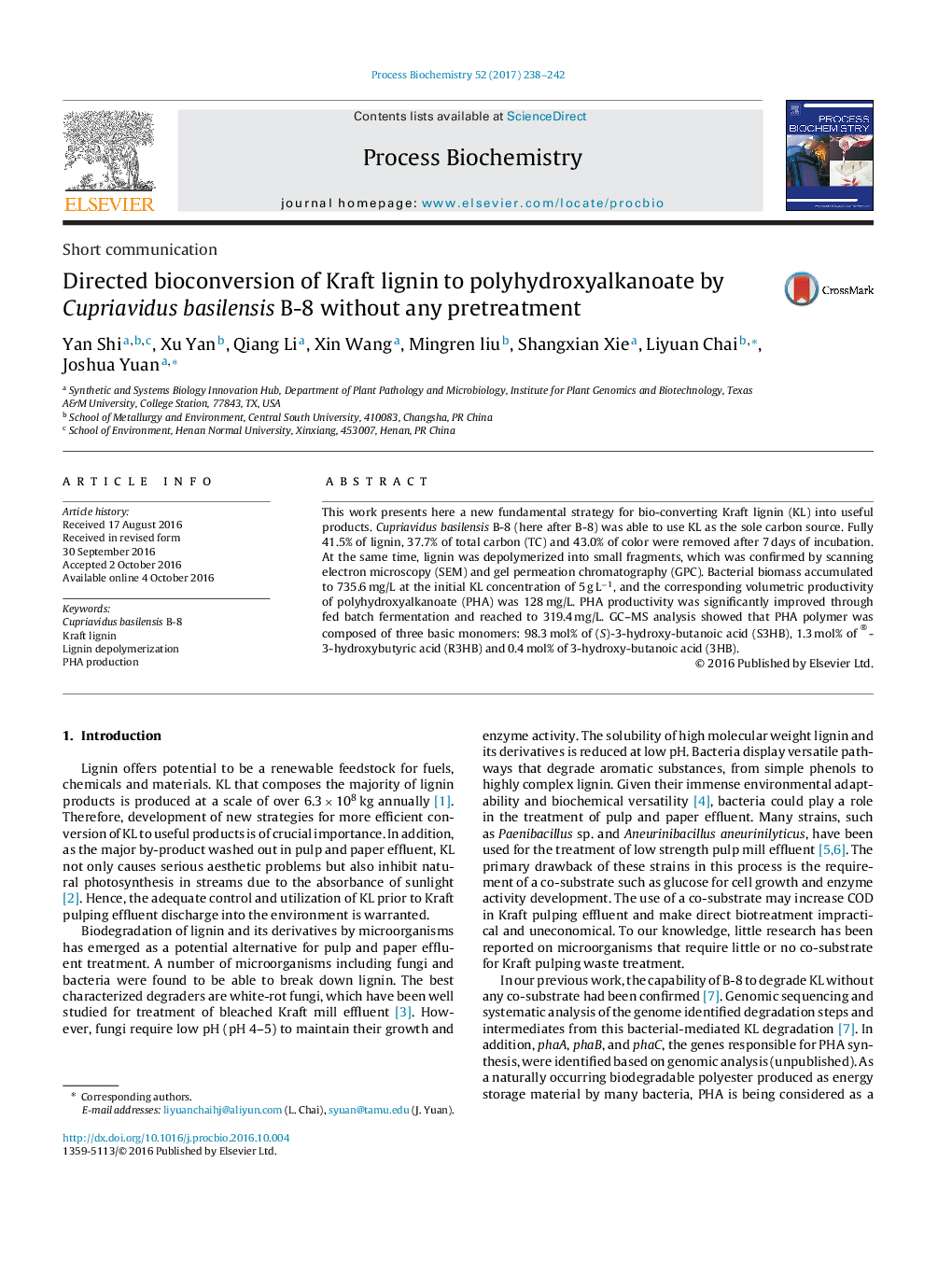| Article ID | Journal | Published Year | Pages | File Type |
|---|---|---|---|---|
| 4755267 | Process Biochemistry | 2017 | 5 Pages |
â¢A new strategy for bio-converting Kraft lignin (KL) into polyhydroxyalkanoate by bacteria was presented.â¢KL was depolymerized into aromatic compounds and then converted into polyhydroxyalkanoate.â¢Great productivity of polyhydroxyalkanoate was obtained from KL by Cupriavidus basilensis B-8 without any pretreatment.
This work presents here a new fundamental strategy for bio-converting Kraft lignin (KL) into useful products. Cupriavidus basilensis B-8 (here after B-8) was able to use KL as the sole carbon source. Fully 41.5% of lignin, 37.7% of total carbon (TC) and 43.0% of color were removed after 7 days of incubation. At the same time, lignin was depolymerized into small fragments, which was confirmed by scanning electron microscopy (SEM) and gel permeation chromatography (GPC). Bacterial biomass accumulated to 735.6 mg/L at the initial KL concentration of 5 g Lâ1, and the corresponding volumetric productivity of polyhydroxyalkanoate (PHA) was 128 mg/L. PHA productivity was significantly improved through fed batch fermentation and reached to 319.4 mg/L. GC-MS analysis showed that PHA polymer was composed of three basic monomers: 98.3 mol% of (S)-3-hydroxy-butanoic acid (S3HB), 1.3 mol% of ®-3-hydroxybutyric acid (R3HB) and 0.4 mol% of 3-hydroxy-butanoic acid (3HB).
Graphical abstractDownload high-res image (113KB)Download full-size image
